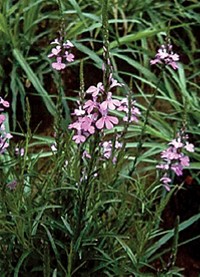Advertisement
Grab your lab coat. Let's get started
Welcome!
Welcome!
Create an account below to get 6 C&EN articles per month, receive newsletters and more - all free.
It seems this is your first time logging in online. Please enter the following information to continue.
As an ACS member you automatically get access to this site. All we need is few more details to create your reading experience.
Not you? Sign in with a different account.
Not you? Sign in with a different account.
ERROR 1
ERROR 1
ERROR 2
ERROR 2
ERROR 2
ERROR 2
ERROR 2
Password and Confirm password must match.
If you have an ACS member number, please enter it here so we can link this account to your membership. (optional)
ERROR 2
ACS values your privacy. By submitting your information, you are gaining access to C&EN and subscribing to our weekly newsletter. We use the information you provide to make your reading experience better, and we will never sell your data to third party members.
Chemical Communication
Plants speak to their parasites
Researchers find that plants manipulate nematode pheromones to repel the pests
by Laura Howes
January 16, 2020
| A version of this story appeared in
Volume 98, Issue 3

It can be helpful to speak your enemy’s language. Some plants do it to generate fake news and lead disinformation campaigns. That’s the latest finding of a collaboration at the Boyce Thompson Institute between Frank C. Schroeder and Daniel F. Klessig, who have found that plants including Arabidopsis, tomato, and wheat can take signaling molecules from attacking parasitic nematodes, modify them, and use them to tell nematodes in the soil to stay away (Nat. Commun. 2020, DOI: 10.1038/s41467-019-14104-2). After a chat at the coffee machine a few years ago, the pair started investigating how plants respond to a class of small molecules called ascarosides, which are produced by parasitic nematodes. In earlier work, they found that when plants detect an ascaroside called ascr#18 they activate their general immune response. But the researchers noticed that ascr#18 molecules don’t stick around. Digging deeper, they realized that the plants were metabolizing #acsr18 using peroxisomal β-oxidation, the same fatty acid pathway that nematodes use to make ascarosides. It seems the plants use the pathway to make a different ascaroside, ascr#9, and excrete the new compound from their roots into the soil, where nematodes that haven’t got into the plant yet sense the compound and decide that plant isn’t the one for them. In a sense, the plants hijack the nematode signal, change it, and use it against their attackers. Schroeder and Klessig say this cross-species communication has probably coevolved to benefit plants and nematodes. The plant protects itself from being overrun, and the nematodes pick uninfected plants, which would have a better chance of supporting them.





Join the conversation
Contact the reporter
Submit a Letter to the Editor for publication
Engage with us on Twitter